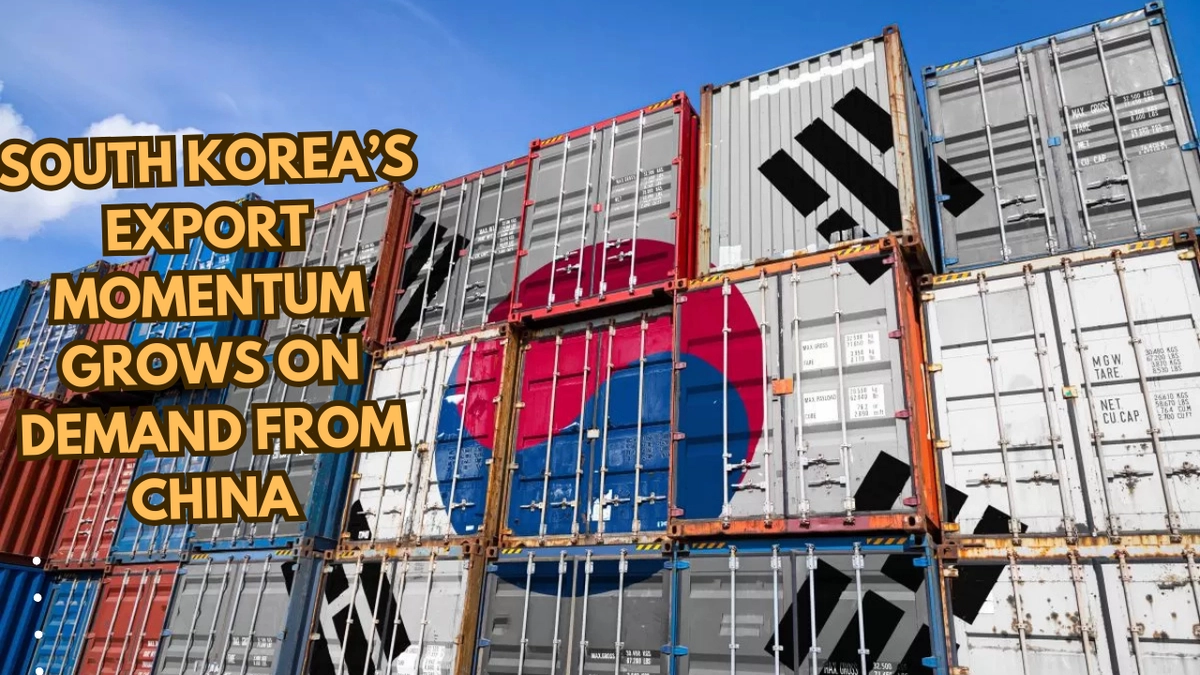In an unexpected turn of events, South Korea’s export boom is surging forward at an unprecedented rate, largely fueled by an unexpected surge in demand from China. After years of fluctuating trade tensions, global supply chain disruptions, and geopolitical uncertainties, South Korea’s trade figures are experiencing a shocking rebound, with China emerging as the powerhouse driving this growth. This latest export surge has surprised economists and analysts alike, who had not anticipated such a powerful resurgence, especially given the challenges of recent years. But now, South Korea’s economic landscape is being reshaped by its growing trade ties with China in ways that are catching the world off guard.
South Korea’s Export Boom: Surprising Revival Powered by China
Read more news Why Municipal Bond ETFs for Retirement Benefits?
South Korea’s export boom has come as a welcome surprise, defying predictions of stagnation in the face of global uncertainties. With China being the world’s second-largest economy and South Korea’s largest trading partner, the recent increase in demand from Chinese industries has provided a much-needed lifeline for South Korean exporters. Contrary to expectations, China’s recovery after the pandemic has spurred a significant demand for South Korean goods, particularly in the technology sector. From semiconductors and display panels to petrochemicals and automotive parts, Chinese manufacturers are turning to South Korea to fuel their production needs.
This surge in demand marks a stark contrast to the previous years, where the trade relationship between China and South Korea was often strained due to political tensions, such as those stemming from the THAAD missile defense system controversy. Despite these past challenges, the current trade scenario reveals an unexpected harmony between the two nations’ economies, which is reshaping South Korea’s trade outlook for 2024.
A Boom Driven by China’s Recovery
The most remarkable aspect of South Korea’s export boom is its foundation in China’s surprisingly rapid economic recovery. In 2023, China’s domestic demand soared as its economy rebounded from the pandemic’s effects, leading to an acceleration in industrial production. As Chinese manufacturers ramped up their production of consumer electronics, electric vehicles, and renewable energy technologies, their need for advanced components—many of which South Korea specializes in—skyrocketed.

This includes critical exports like semiconductors, which have become the backbone of China’s tech and electronics industries. With Chinese tech companies such as Huawei, Xiaomi, and BYD ramping up their production, South Korea’s cutting-edge semiconductor products are in high demand. The country’s display panel industry, which provides screens for China’s booming smartphone and TV market, is also seeing a significant uptick in orders. These developments have combined to create a perfect storm of demand that is propelling South Korea’s exports to new heights.
The Unlikely Driver: South Korea’s Semiconductor Industry
One of the most surprising aspects of this export boom is the semiconductor sector, which has traditionally been South Korea’s largest export category. What makes this resurgence unexpected is that the semiconductor market faced considerable uncertainty just a year ago. Global shortages, supply chain issues, and falling demand from Western markets have led some experts to predict a slowdown in this critical industry.
However, China’s demand for high-tech chips has helped reverse the fortunes of South Korea’s semiconductor producers. Companies like Samsung Electronics and SK Hynix are now benefiting from the Chinese demand for advanced memory chips, which are used in smartphones, computers, and various industrial applications. With China’s aggressive push into the AI, 5G, and electric vehicle sectors, South Korea’s role in supplying these key technologies has never been more critical.
The unexpected demand from China is not only bolstering South Korea’s semiconductor exports but also contributing to a broader economic recovery, which has seen South Korea’s GDP growth projections revised upward for the year.
Risks and Uncertainties Loom Ahead
While the current export boom is undoubtedly a welcome development, it comes with its own set of risks. The global semiconductor market remains volatile, and over-reliance on China could expose South Korea to political and economic risks should relations between the two countries deteriorate. Tensions over issues like trade imbalances, intellectual property, or geopolitical conflicts could disrupt the current trade momentum.
Moreover, competition is heating up in the semiconductor market. South Korea is not the only player in this space; countries like Taiwan, Japan, and the United States are also major exporters of advanced semiconductor technology. Any shifts in global supply chains or trade policies could erode South Korea’s market share, particularly if other nations increase their focus on China’s growing technological needs.
Economic Impact: A Lifeline for South Korea’s Economy
The effects of this export boom on South Korea’s economy are already being felt. The nation’s trade surplus has reached record levels, and the country’s manufacturing sector is witnessing rapid growth. This surge in exports is expected to help South Korea’s economy recover from the impacts of the COVID-19 pandemic, where global demand for goods had been sluggish. As China’s demand continues to fuel South Korea’s export-driven economy, this newfound prosperity is helping to offset weaknesses in other sectors of the economy.
South Korea’s manufacturing and technology industries are benefiting the most, with companies expanding production to meet the rising demand. This is translating into stronger employment figures, increased investment in research and development, and heightened economic optimism.
Conclusion: South Korea’s Future Shaped by Chinese Demand
Looking ahead, South Korea’s export boom shows no signs of slowing down, with China’s demand continuing to play a central role. This unexpected surge has not only defied expectations but has also reshaped the economic trajectory of South Korea in ways that were previously unimaginable. While risks remain, particularly given the geopolitical landscape, South Korea is poised to ride the wave of this export revival for the foreseeable future.
The surge in Chinese demand has proven to be a powerful catalyst for South Korea’s economy, and this trend is expected to continue reshaping the nation’s future. As long as the demand from China remains strong, South Korea’s export sector will likely remain a central pillar of its economic growth in the years to come.









1 thought on “South Korea’s Export Boom: Unprecedented Growth Driven by Surging Chinese Demand”